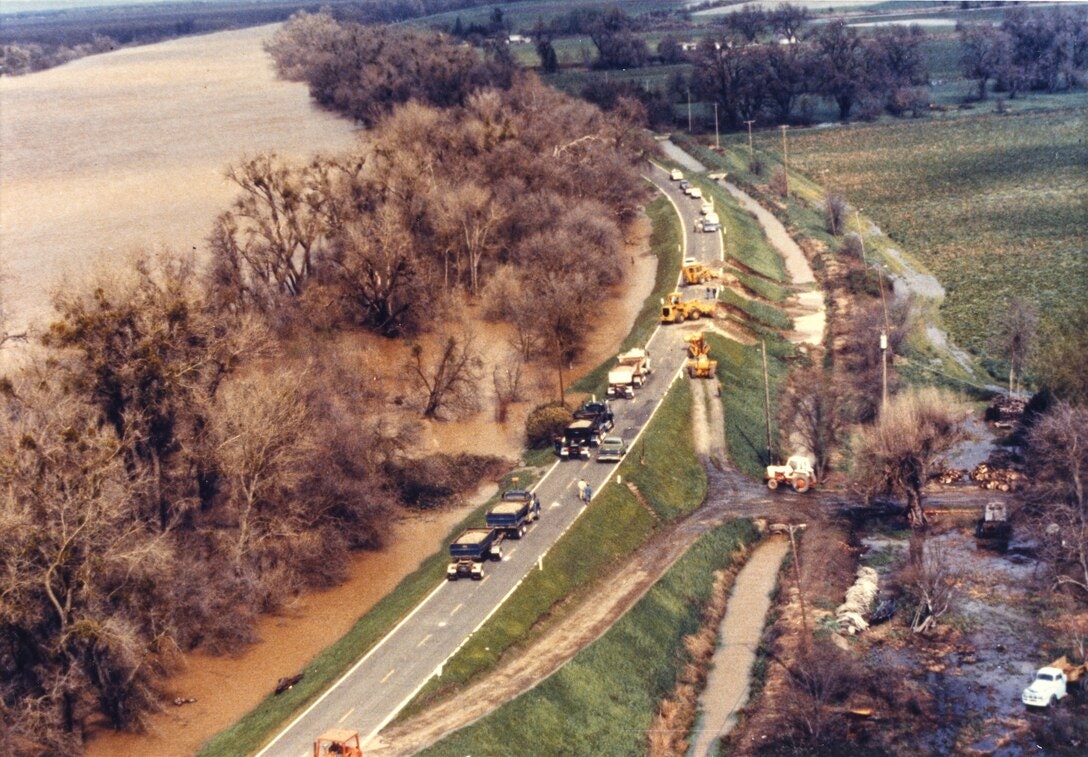What is Levee Seepage?
Levee seepage is when water moves away from the river channel, either below or through the levee and surrounding land surface.

Two main factors contribute to seepage:
- High water pressure within the river (such as during periods when the river is near flood stage)
- Pourous earth material within and underlying the levee.
The combination of high water pressure and easily penetrable earthen material can be evident in sand boils and water seepage on the land side of the levee. Under severe conditions, the clay blanket; naturally occurring earthen material found beneath the soil level; on the land side may be ruptured and the increased flow of the under-seeping water undermines the levee, causing the levee to breach or collapse.

How is levee seepage prevented?
Two ways levee seepage is prevented are:
- Seepage cutoff walls
- Seepage berms
Seepage cutoff walls extend deep into the earth to stop underground water seepage from eroding and flowing underneath the levees. Seepage berms are round ridges of land that are added to levees. Their purpose is to fortify the levee to prevent seepage as well as prevent erosion sediment deposits.
The levees that surround the Natomas Basin already have seepage cutoff walls and berms installed in many locations, however, surveying done by the Army Corps of Engineers determined that deeper cutoff walls will need to be implemented to protect the Basin from catastrophic flooding.
